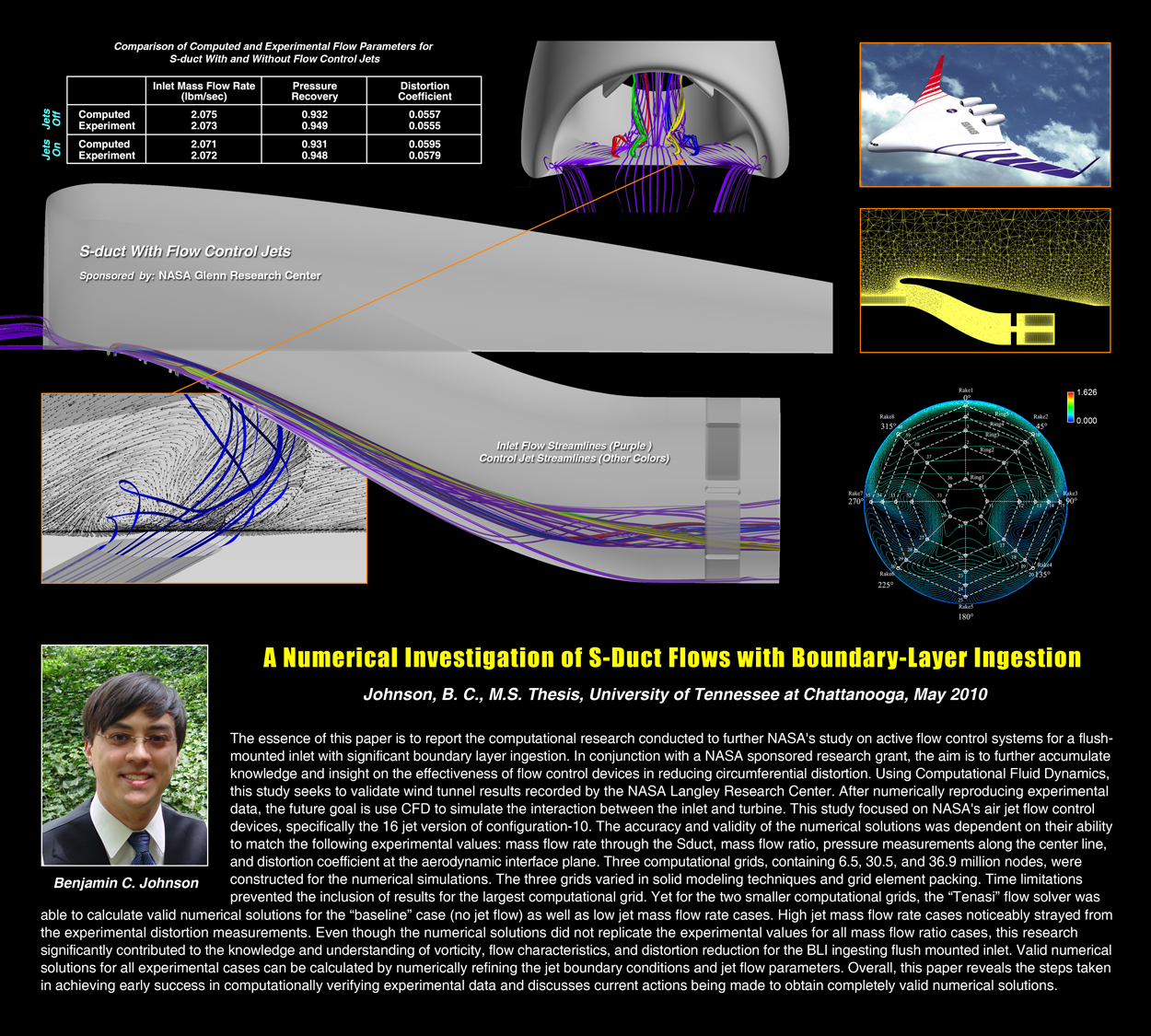Ben Johnson
A Numerical Investigation of S-Duct Flows with Boundary-Layer Ingestion
A Thesis Presented for the Master of Science in Computational Engineering Degree, University of Tennessee at Chattanooga
Benjamin C. Johnson, May 2010
Abstract:
The essence of this paper is to report the computational research conducted to further NASA's study on active flow control systems for a flush- mounted inlet with significant boundary layer ingestion. In conjunction with a NASA sponsored research grant, the aim is to further accumulate knowledge and insight on the effectiveness of flow control devices in reducing circumferential distortion. Using Computational Fluid Dynamics, this study seeks to validate wind tunnel results recorded by the NASA Langley Research Center. After numerically reproducing experimental data, the future goal is use CFD to simulate the interaction between the inlet and turbine. This study focused on NASA's air jet flow control devices, specifically the 16 jet version of configuration-10. The accuracy and validity of the numerical solutions was dependent on their ability to match the following experimental values: mass flow rate through the Sduct, mass flow ratio, pressure measurements along the center line, and distortion coefficient at the aerodynamic interface plane. Three computational grids, containing 6.5, 30.5, and 36.9 million nodes, were constructed for the numerical simulations. The three grids varied in solid modeling techniques and grid element packing. Time limitations prevented the inclusion of results for the largest computational grid. Yet for the two smaller computational grids, the “Tenasi” flow solver was able to calculate valid numerical solutions for the “baseline” case (no jet flow) as well as low jet mass flow rate cases. High jet mass flow rate cases noticeably strayed from the experimental distortion measurements. Even though the numerical solutions did not replicate the experimental values for all mass flow ratio cases, this research significantly contributed to the knowledge and understanding of vorticity, flow characteristics, and distortion reduction for the BLI ingesting flush mounted inlet. Valid numerical solutions for all experimental cases can be calculated by numerically refining the jet boundary conditions and jet flow parameters. Overall, this paper reveals the steps taken in achieving early success in computationally verifying experimental data and discusses current actions being made to obtain completely valid numerical solutions.
